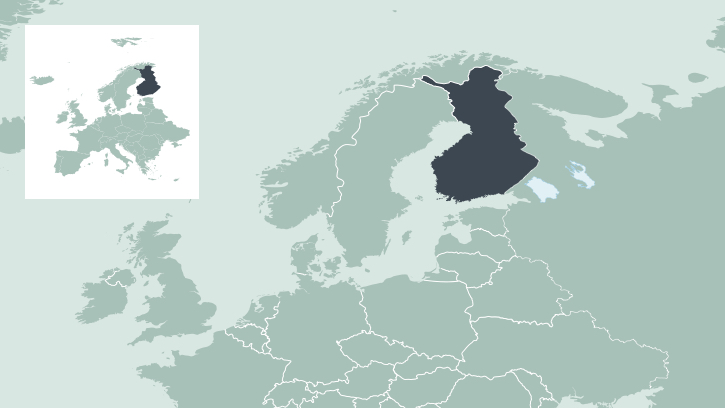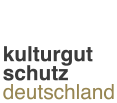
Finnland
- Contracting State since
- 1999.06.14
- Lastly updated
- 2022.03.11

Contact for consular services
- German Embassy
-
Bilateral relations and German missions
Review
National Regulations
Act on Restrictions to the Export of Cultural Objects 933/2016
Decree on Restrictions to the Export of Cultural Objects 652/2017
The national acts have been translated into Swedish .
EU regulations
The licence for the export of cultural goods from the European customs territory is subject to Council Regulation (EC) No. 116/2009 of 18 December 2008 on the export of cultural goods (OJ L 39, 10.2.2009, p. 1). Exports to the internal market, however, are subject to national regulations, which may differ from the Council regulation with respect to the value and age thresholds of the categories of the protected cultural property.
Further information on the legal situation can be requested from the EUR-Lex Datenbank. The EU also maintains a special database for the regulations regarding the protection of cultural property.
The multilingual UNESCO Database of National Cultural Heritage Laws provides access to the relevant national legal bases. Another source of information on national cultural asset protection laws is the Sharing Electronic Resources and Laws On Crime (SHERLOC) of the United Nations Office on Drugs and Crime (UNODC).
This State Party to the UNESCO Convention of 14 November 1970 is also a State Party to the 1995 UNIDROIT Convention on Stolen or Illegaly Exported Cultural Objects, which entered into force on 1 July 1998. The national legal bases are therefore also partially provided by the WIPO database.
Authorities responsible for issuing export permits
The Finnish Heritage Agency is the licensing authority that gives advice and guidance in matters concerning the export of cultural items. Finnish Customs is the authority supervising the export of cultural objects. The National Gallery acts as the licensing authority in matters pertaining to artwork. If an item is to be exported due to emigration or inheritance and the licence application concerns several items, the Finnish Heritage Agency acts as the licensing authority.
The National Gallery and the Finnish Heritage Agency process EU export licences in accordance with their field of expertise, and the Finnish Heritage Agency keeps a record of the export licences granted in the whole country.
Licence application forms can be acquired from the licensing authorities. Licensing authorities charge a fee for the licence process in accordance with the Act on Criteria for Charges Payable to the State.
Finnish Heritage Agency
P.O.Box 913
FI-00101 Helsinki
Finland
Contact
email: kirjaamo@museovirasto.fi
homepage: www.museovirasto.fi/en/
Finnish National Gallery
Kaivokatu 2
FI-00100 Helsinki
Finland
Contact
email: kirjaamo@nationalgallery.fi
homepage: http://www.kansallisgalleria.fi/en/yhteystiedot/
FI-00101 Helsinki
Finland
FI-00100 Helsinki
Finland
Procedure
-
When old objects are going to be exported from the country, it is important to find out well in advance whether the export of these items is restricted.
The Finland Cultural Goods (Suomi- Kulttuuriesineet) form is used when applying for a national export licence for cultural goods. The national export licence application form is available electronically and can be sent either by post (to: Museovirasto, Kirjaamo, PL 913, 00101 Helsinki) or by email (kirjaamo@museovirasto.fi).
A specific EU Cultural Goods (EU-Kulttuuriesineet) form is used for the EU licence procedure. EU licence form is available only on paper and may not be sent by email. The appearance of the EU form and the sections to be filled are identical in all EU Member States.
The application forms must be typed or handwritten. Licensing authorities answer questions regarding filling in these forms.
Three photographs of the object being exported or a detailed list of the cultural items must be appended to the licence application. The copies of the export licence handed back to the applicant will be appended with a stamped photograph or list equipped with an export licence number in order to ensure the identification of the item/items in question. When applying for an export licence, the actual cultural object will not be presented to the licensing authority, but the authority will make a decision based on the information provided in the application and the photograph attached. The licensing authority does, however, have the right to investigate the item in further detail or photograph it.
If a cultural object is being exported from Finland for a fixed period of time and the licensing authority orders it to be returned by a specific date, the owner of the object must notify the licensing authority when the object has been returned to Finland.
If an item is being exported outside the EU, the applicant must evaluate whether the financial value of the object being exported exceeds the value threshold requiring EU licence procedure. It must be noted that in respect of export outside of the EU, for certain item categories, namely archaeological items, parts of dismantled monuments, incunabula and manuscripts, and archives, the EU licence procedure must be followed regardless of the item's financial value.
Licensing authorities consider various matters when making a decision regarding an export licence. The item in question may be rare, or becoming rare, it may be hold particular significance when it comes to Finnish national cultural heritage, or it may be essentially connected to valuable cultural environments, major historical figures or events. Artistic, scientific or historical viewpoints or other particular reasons may also influence the decision, preventing the authority from granting an export licence.
The licence will expire if the item in question has not been removed from the country within one year of the date when the licence was granted.
- Duration
- No information available
- Costs
- A fee of an unknown amount is charged for the granting of the permit.
Forms
The UNESCO-WCO Model Export Certificate for Cultural Objects is not used.
There are two application forms for export licences, one for the national and one for the EU licences. The national form is used for exports both from Finland to Member States of the European Union and to exports to third countries when the financial value of the object does not exceed the financial threshold in Annex 1 to Council Regulation 116/2009.
For the time being only the national form is available electronically.
Further Information
Information on the protection of cultural property and related exports is available on the website of the Finnish Heritage Agency
Disclaimer:
The above information is based on the information available and deemed trustworthy at the time indicated, in particular the information provided by the State and the information as available in the UNESCO database . No guarantee can be given for the correctness and completeness of this information, nor can any liability be accepted for any damage that may occur. Legal regulations may change at any time without the Minister of State for Culture and the Media being informed. The decision to acquire, import, export or place cultural property on the market is your sole responsibility. It is therefore recommended that you contact the relevant diplomatic or consular representation and/or the export authorities of the respective foreign country.

